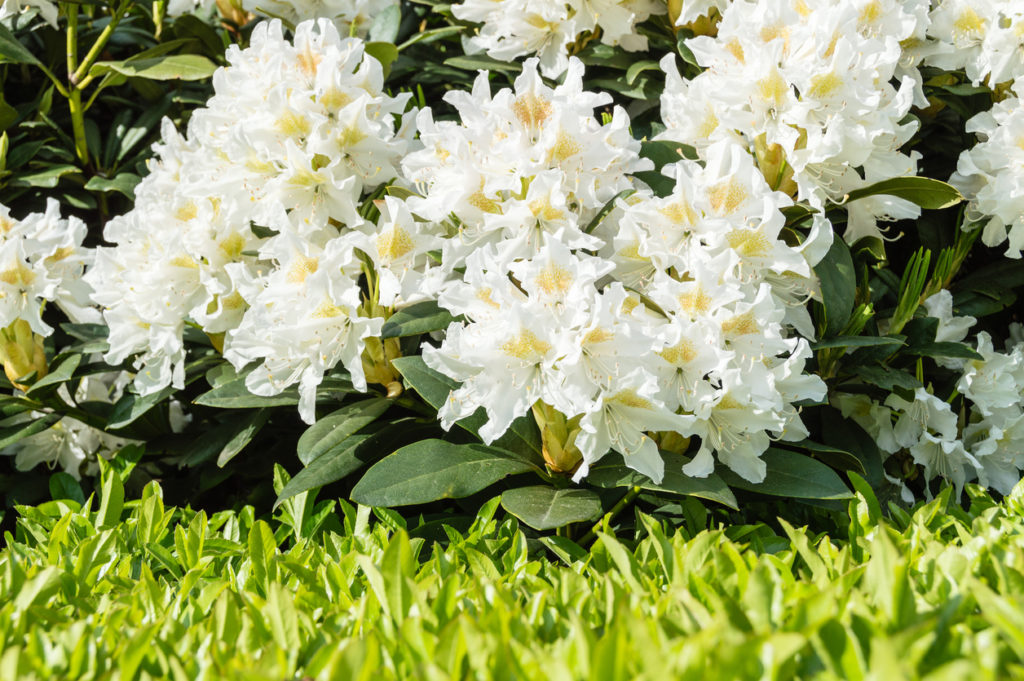How To Deter Deer

As you begin readying the soil and buying plants for your garden, make sure you have strategies to deter deer. Emerging flower buds and tender young plants are a deer’s culinary dream. It’s easy to set up some safe ways to keep deer away, so you can soon enjoy a thriving garden. Read on for tips.
A First Line of Defense
The deer population is on the rise and these herbivores are visiting suburban neighborhoods in record numbers. Create obstacles and barriers around your home, starting with plants deer don’t like. Varieties that make deer wince or leave the area include those that are heavily scented (such as sages, ornamental salvias and peonies), roughly textured (such as agave, lamb’s ears and sunflowers) and toxic (such as bleeding heart, daffodils and foxglove).
You can view a complete list of Landscape Plants Rated By Deer Resistance which ranks plants by rarely, seldom, occasionally and frequently damaged by deer. This will aid you as you plan your perimeter plantings.
Another perimeter protection strategy is a living fence, which provides an animal barrier and natural beauty. Junipers are a good choice, as they contain oils in their needles that deer don’t like, they are drought tolerant, and have few pest issues. Rhododendron and holly are also attractive shrubs that generally don’t draw the attention of deer.
In-Yard Strategies To Deter Deer
Determined deer may still enter your yard, and if they do, give them reasons to feel unwelcome. Rearrange, add and remove items in your landscape, to deter deer with unappealing sights, sounds and navigational challenges.
*Remove bird feeders and pet food or at least keep them out of reach to deer.
*Keep the area clean of debris, fallen produce, and ailing plants.
*Cover shrubs with nets to keep nibbling mouths away.
*Stir the garden with movement and sounds that will startle deer into leaving. These include wind chimes and items that spin, whistle or rotate.
*Stop deer in their tracks by adding levels to your landscape, with sunken beds, terraces and stacked wood, as deer don’t like to climb.
*Place container plants on decks and other areas deer can’t reach.
*Surround your treasured plants with some deer resistant plant varieties.
Safe On-Plant Protection
Keep your plants safe, and unappealing to deer with Bobbex Deer Repellent which provides on-plant protection all year. The eco-friendly topical sprays coat surfaces with a clear film that helps plants retain moisture during dry or drought conditions. What’s more, Bobbex formulas contain animal proteins and other organic elements,
making the use of Bobbex Repellents beneficial for vegetation development. All Bobbex products are safe for plants, people, pets, wildlife and aquatic life.
In an independent study conducted by the State of Connecticut Department of Forestry and Horticulture, Bobbex was determined to be the Best Deer Repellent tested, ranking higher than any other brand. With a Protective Index score of 93%, only a physical fence worked better than Bobbex.
Beautiful Gardens Begin With Bobbex
From the first bud to the last bloom, Bobbex can help you deter deer. Year round. We think you will like the way your garden looks when it is protected by safe, effective Bobbex. Thriving garden or deer diner? We know the answer to that!
